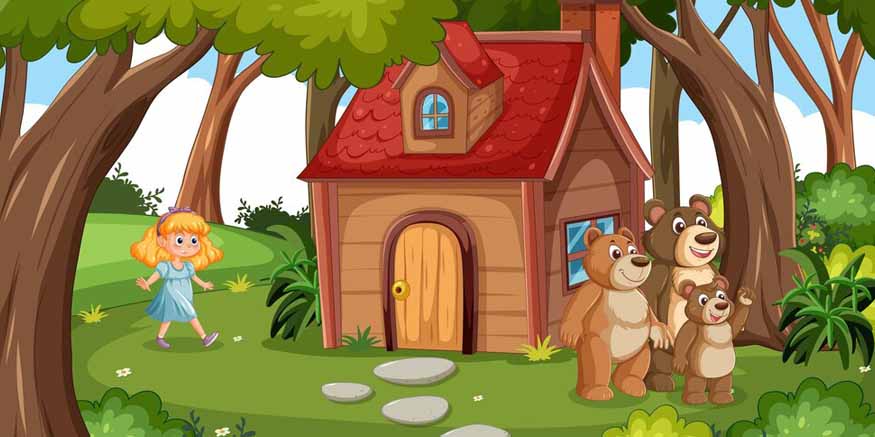Exploring Animals And Their Homes: A Detailed Guide

Do you ever think of where animals live and how they make their homes comfy? Then let’s learn about nature’s builders! Each creature, from buzzing bees to flying birds, has a peculiar dwelling that suits it.
During this journey, we will learn about the interesting names given to different homes for animals. Additionally, we’ll see how they built their incredible and comfy homes where young animals live and grow. Well then, put on your explorer’s hat as you come with us on a thrilling adventure of wonder and awe. Now, let us plunge deeply into the wild world of animals and their homes!
Different Types of Animals and Their Home Names
Animals live in different types of houses that are best suited for them. Here are some animal home names and their significance:
- Bees – Beehive:
- Birds – Nest:
- Rabbits – Burrow:
- Ants – Anthill:
- Squirrels – Drey:
- Spiders – Web:
- Fish – Coral Reef:
- Beavers- Lodge:
- Foxes-Den:
- Hermit Crabs-Shell:
To produce beeswax, honeybees labour collectively to construct complex bee hives. These six-sided cavities make up a complete settlement of honey bees. These cavities are then used for food storage and reproduction.
Birds are highly skilled at making their nests using twigs and other materials, such as grass. Generally, birds build these cosy shelters on trees, cliffs, or man-made structures. Building nests protects them while laying eggs and raising chicks.
By burrowing under the ground, rabbits create intricate networks of tunnels and chambers. These burrows are safe places for rabbits to escape predators and harsh weather conditions since they are roofed with fur or lined with grass for relaxation and rearing offspring.
Anthills are extensive underground habitats constructed by ants. Anthills have complicated channels and rooms that include nurseries for ant larvae. They also have storage spaces for food and quarters for other members of the colony.
Squirrels construct dreys on the trees using twigs, leaves, and mosses. Comfortable homes serve as good places to rest, breed, or deliver newborns. They store food for the winter months while giving their dwellers splendid views.
Spiders create webbed networks made of silk, which trap prey and become living quarters. These webs take various forms, such as orb webs or funnel webs. Webs provide spiders with a well-constructed framework to search for food, produce offspring, and save themselves from enemies.
Coral reefs are the home of certain fish species, such as clownfish or damselfish. Such marine ecosystems provide the fish with hiding places, sources of nutrition, and sites for reproduction.
The beavers build lodges by cutting down trees and using the branches to make them look like domes over rivers or ponds. These lodges have entrances underwater, where beavers live in safe conditions. Here, they breed their young ones and store food for winter.
Dens make comfortable homes for foxes that protect them from predators and other hostile weather conditions. Moreover, they use these underground hideouts to raise their little ones during the daytime.
Hermit crabs use mollusc shells as homes; they carry them about as mobile forms of shelter. Hermit crabs grow bigger and thus seek larger shells into which they can move. They leave behind the old ones to get new homes.
How Do Animals Make Their Homes?
Many techniques are employed by animals while constructing their homes. They are made to adapt, meet their peculiar needs, and adapt to unique environments. Some of them are:
- Materials for Construction:
- Digging:
- Weaving:
- Using Natural Structures:
- Engineering:
Some animals, like birds and squirrels, gather twigs, leaves, and grass to form their homes. Birds weave these materials together into a nest. And squirrels make dreys in trees out of the same materials.
Rabbits, foxes, and ants prefer the digging method for creating their homes. Rabbits dig burrows under the ground, whereas foxes dig dens at ground level or change existing rabbit holes. Ants are good at digging very complicated anthills, which are found underground.
Spiders produce silk threads from which they weave complex webs. These webs act as homes and hunting grounds for spiders. They provide a safe place for them while trapping prey.
Other animals in this category include hermit crabs and some species of fish that use homes made by nature. Hermit crabs live in empty shells left behind by molluscs, while fish get shelter from coral reefs, caves, or gaps in rocks.
Beavers are astonishing engineers. They use their teeth to drop trees and build lodges in streams or ponds made of branches, mud, and other materials to make strong structures with underwater entrances aimed at protection.
In general, animals show great cleverness and flexibility when it comes to home construction. Home building is an indicator of the adaptability and creativity possessed by various species of animals.
As we sum up our journey into the world of animals with their house, the diversities of habitats struck us while observing the way these creatures built their houses. No doubt, it was a fascinating experience. Each rabbit’s comfortable burrow or humming beehive represents a unique set of needs and behaviours suited for its residents.
By exploring how animals construct their houses, we have enriched our understanding of nature and fostered an appreciation for nature’s builders. Although young explorers like us are only on the surface in this huge realm, so much more remains to be seen.
If you are in search of a good school for your kids, Billabong High International School is probably the best option to consider. We ensure children develop holistically nd enjoy learning. To learn more about our curriculum, contact us today.








